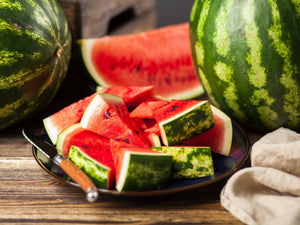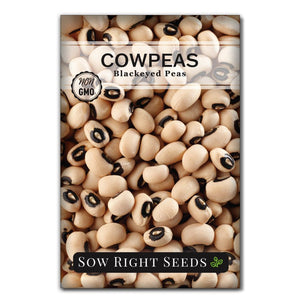How to Grow and Care for Madagascar Periwinkle Flowers (Catharanthus roseus)
More than just a beautiful tropical flower, Madagascar Periwinkle is known for its medicinal properties. This popular summer-blooming flower will thrive without a lot of maintenance. We’ll share how we grew it in our garden and give you all the tips you need to start growing Madagascar Periwinkle (Catharanthus roseus) from seed.

What is Madagascar Periwinkle (Catharanthus roseus)
Although similar in looks to both Minor and Major Vinca, Catharanthus roseus has some planting and care differences worth noting. Knowing the differences can help you decide which plant is best for your garden.
Madagascar Periwinkle has dark green glossy leaves and can bloom in colors from white to rose and red. Although the common name, periwinkle, suggests a bluish color, Catharanthus roseus accurately identifies this flower’s color. Each bloom has five petals that form a pinwheel-looking flower. It can grow 6 to 18 inches high and spread 6 to 18 inches wide. Madagascar Periwinkle will also readily self-seed.
Sometimes referred to as Annual Vinca, it is hardy in zones 10 and 11 but can be grown as an annual in other zones. As a tender perennial, it won’t survive cold weather. But it does grow as a perennial in Madagascar and other warm climates.
This heirloom variety of Madagascar Periwinkle is a colorful mix of white, rose, and red flowers. This plant is dwarf in size but beautiful and full of blooms with glossy green leaves.
How to Grow Madagascar Periwinkle from Seed
We’ve successfully grown Madagascar Periwinkle from seed in our midwestern garden, which is known for having hot and humid summers. Keep in mind that this plant thrives in a tropical climate, and plan accordingly.
To get the most bloom time out of these plants, start seeds indoors 10 to 12 weeks before your last frost date. That means with a last frost date of April 20th, we can start our periwinkle seeds indoors as early as January 26.
Starting plants from seed is easy to do with these seed germination tips.

Madagascar Periwinkle Seed Germination Tips
- Sow seeds 1/4 to 1/2 inch deep in moist seed starting mix.
- Periwinkle seeds need darkness to germinate.
- Use a heat mat to keep soil temperature between 75-80ºF.
- Once seeds have germinated in about 10 to 14 days, use grow lights to give the seedlings enough light and prevent them from becoming leggy.
- After all danger of frost has passed, Madagascar Periwinkle plants can be hardened off and transplanted outdoors.
- Take care not to disturb the roots and space plants 12 to 18 inches apart.

Caring for Periwinkle Plants
Warm tropical climates where temperatures never dip below 45ºF is where Madagascar Periwinkle feels most at home. This flower will bloom from June to the first frost, so plant it where you can enjoy it all summer long.
Sun
Madagascar Periwinkle can grow in full sun to partial shade. However, full sun will result in more flowers.
Soil
Although periwinkle can tolerate all kinds of soil, it needs to drain well. This is an excellent flower to plant in sandy soil.
Water
Keep plants well-watered without keeping the soil waterlogged. Once it is established, Madagascar Periwinkle is known to be heat and drought-tolerant. Too much water can result in root rot.
Fertilizer
Since Madagascar Periwinkle thrives in poor soil, it doesn't need additional fertilizer. Before planting, you can amend the soil with compost, which will provide the nutrients plants will need for the entire growing season.
Cutting/Pruning
When grown as an annual, it isn’t necessary to prune or deadhead Madagascar Periwinkle plants. But if you grow plants indoors, you can prune above a leaf node to encourage bushier growth. Branches can also be cut and propagated for new plants.

Pests and Diseases
Like most flowers, Madagascar Periwinkle plants can be affected by infestations of aphids and spider mites. Use natural methods to get rid of aphids and spider mites to keep your plants healthy.
Fungus is another issue to watch for. Take care to water the roots and avoid overhead watering to reduce the risk of blight and fusarium wilt.
Periwinkle is deer and rabbit-resistant but also toxic to dogs, cats, and horses.

Madagascar Periwinkle FAQs
Is Madagascar Periwinkle the same as vinca minor?
While they look a lot alike, they are not the same species. Catharanthus roseus, Madagascar Periwinkle, used to be classified under vinca but is now under the Catharanthus genus.
Is Madagascar Periwinkle invasive?
Although it can self-seed, it is not considered invasive in most areas. Because of its tropical climate, Hawaii is one place where it can become invasive.
Can Madagascar Periwinkle be grown in containers?
Madagascar Periwinkle grows well in pots and can be taken indoors to overwinter. Ensure that the soil drains well and the plants get enough light.

Medicinal History of Madagascar Periwinkle
Madagascar Periwinkle (Catharanthus roseus) has a long history as a medicinal plant and is used in medicinal research due to the unique compounds it produces.
Vincristine and vinblastine, both derived from Madagascar periwinkle, are recognized for their role in treating certain cancers, including Hodgkin's lymphoma and leukemia. These compounds, which are processed in controlled lab settings to create medical drugs, work by interrupting the growth of cancer cells. While cultivating Madagascar periwinkle in your garden won’t produce these compounds at therapeutic levels, the plant’s role in medicinal history is a fascinating example of how nature contributes to healthcare.
Beyond its role in anti-cancer drug research, traditional uses of Catharanthus roseus cover a range of medicinal purposes. It has been used in Chinese medicine for its reported benefits in managing inflammation, skin conditions, high blood sugar, and other health concerns. The plant also has antimicrobial and antihypertensive (blood pressure-lowering) properties that contribute to its value in natural medicine.
Sources:
Science Direct: Pharmacological significance of Catharanthus roseus in cancer management: A review

Madagascar Periwinkle is a beautiful tropical flower that comes in white and shades of rose. It thrives in the hot summer sun and is easy to care for. Its long history in traditional medicine has made it a focus of scientific research. While the Madagascar periwinkle in your garden won’t create a home-grown medicine cabinet, it’s a fascinating example of how nature can inspire life-saving research. Enjoy it as an ornamental plant, and appreciate that this humble flower is part of important medical advances that continue to benefit many.
With these planting and growing tips, you can start growing Madagascar Periwinkle from seed. And make sure you start with the best heirloom seeds that are guaranteed to grow.
Written by Beverly Laudie





Leave a comment